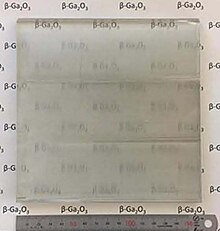Lisa M. Porter
[1] She earned her bachelor's degree in 1989, before moving to North Carolina State University for her graduate studies.
[2] After earning her doctorate, Porter joined North Carolina State University as a postdoctoral research associate.
Her early research considered the metal contacts for high-power electronic devices and oxide–silicon carbide interfaces.
[6] In particular, β-Ga2O3 bulk single crystals can be fabricated using low-cost melt-growth methods and can be produced in large wafers.
[3][7] The sensors can be used to detect hydrogen in harsh environments, including nuclear reactors and chlorine production cells.
